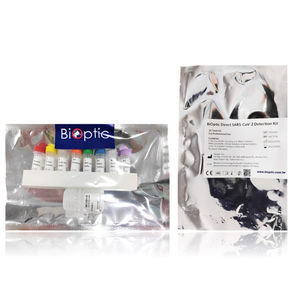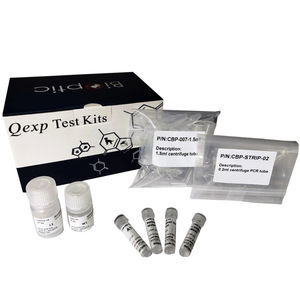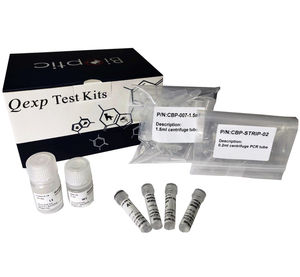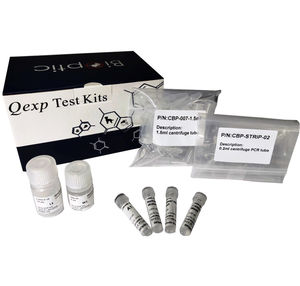
- Laboratory
- Laboratory medicine
- Nucleic acid reagent
- BiOptic. Inc.

- Products
- Catalogs
- News & Trends
- Exhibitions
Nucleic acid reagent kit Qexp-MDx ALDH2for genotypinggeneticbuccal Swabs

Add to favorites
Compare this product
fo_shop_gate_exact_title
Characteristics
- Type
- nucleic acid
- Applications
- for genotyping
- Tested parameter
- genetic, buccal Swabs, alcohol, acetaldehyde
Description
BiOptic, Inc. provides an optimized Qexp-MDx Series kit with it's core Qsep Series products of fully-automated capillary electrophoresis platforms, mini PCR and powerful DirctGO reagent, which eliminates the need for extraction and purification of nucleic acid providing rapid, accurate and cost-effective detection platform.
In 1981, Japanese scientist Dr. Harada discovered that people who lack Acetaldehyde Dehydrogenase (ALDH2) will flush when drinking alcohol. This phenomenon is called Alcohol Intolerance. According to a study by the Stanford University School of Medicine, people with a genetic condition in the ALDH2 gene (ALDH2 Deficiency) are easy to skin flush after drinking. If they drink 2 glasses of red wine a day, the risk ratio of head and neck cancer and esophageal cancer will be 50 times higher than normal.
WHY it is such high in the Asian region?
According to research, the genetic variation of ALDH2 can be traced back to about 2000 to 3000 years ago, the Baiyue ethnic group in China. It caused the proportion of Han descendants with alcohol intolerance quite high. In Taiwan, up to half of the population suffer from it, making it the country with the highest rate of alcohol intolerance in the world.
WHAT are the risks of ALDH2 Deficiency?
In 2007, the WHO listed acetaldehyde converted from alcohol as a primary carcinogen. Due to acetaldehyde, a product of incomplete metabolism of alcohol, people with genetic conditions in ALDH2 are prone to drunkenness, hangovers, headaches after drinking, and rapid heartbeat.
VIDEO
Catalogs
Products Catalog Ver. 2019
36 Pages
Exhibitions
Meet this supplier at the following exhibition(s):

Related Searches
- Assay kit
- Solution reagent kit
- Molecular biology reagent kit
- Infectious disease detection kit
- Research reagent kit
- Diagnostic reagent kit
- Laboratory reagent kit
- Protein reagent kit
- Enzyme reagent kit
- Dye reagent
- PCR reagent kit
- Virus reagent kit
- Tissue detection kit
- Animal assay kit
- Nucleic acid reagent kit
- Feces test kit
- DNA polymerase reagent kit
- Taq DNA polymerase reagent kit
- Gene reagent kit
- Parasite test kit
*Prices are pre-tax. They exclude delivery charges and customs duties and do not include additional charges for installation or activation options. Prices are indicative only and may vary by country, with changes to the cost of raw materials and exchange rates.












